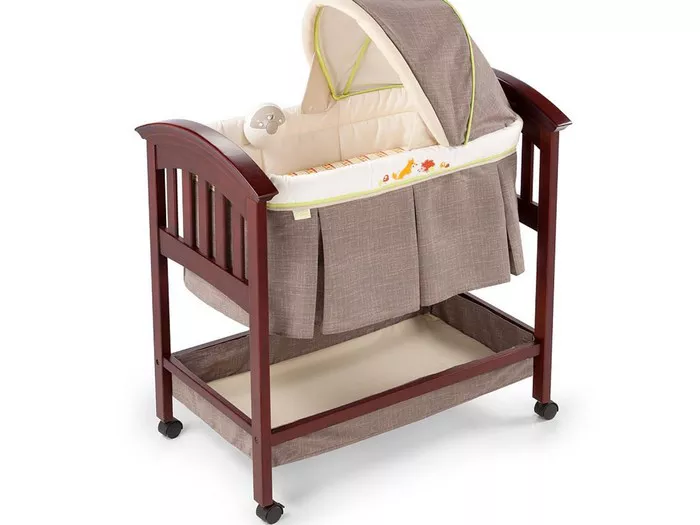Jenny Lind cribs hold a cherished place in the hearts of many parents, combining vintage charm with practical functionality. Named after the renowned Swedish opera singer, Jenny Lind, these cribs have a rich history dating back to the 19th century. Their popularity surged in the United States during the Victorian era and has endured to the present day.
One of the most distinctive features of Jenny Lind cribs is their spindle design. These cribs are characterized by evenly spaced vertical spindles along the sides, creating an elegant and timeless aesthetic. Beyond their visual appeal, Jenny Lind cribs are celebrated for their sturdy construction and versatility, often converting into toddler beds or daybeds as the child grows.
Safety Standards and Compliance:
When it comes to selecting a crib for their little one, safety is paramount for parents. Fortunately, modern Jenny Lind cribs are designed with this priority in mind. Manufacturers adhere to stringent safety standards established by organizations such as the Consumer Product Safety Commission (CPSC) and ASTM International.
These cribs undergo rigorous testing to ensure compliance with safety regulations, including assessments for structural integrity, lead content, and chemical emissions. By meeting or exceeding these standards, Jenny Lind cribs provide parents with peace of mind, knowing that their child’s sleep environment is secure.
Materials and Non-Toxic Finishes:
Concerns about the materials used in cribs are understandable for parents. Thankfully, Jenny Lind cribs are typically crafted from safe and durable materials. From solid wood to sustainable materials like bamboo, manufacturers prioritize quality and safety in their construction.
Furthermore, Jenny Lind cribs are finished with non-toxic paints or stains, safeguarding against harmful chemicals. Parents can rest assured knowing that these finishes are lead and phthalate safe, minimizing the risk of exposure to potentially hazardous substances.
Spindle Spacing and Entrapment Hazard:
Historically, Jenny Lind cribs were associated with concerns regarding spindle spacing, particularly in older models manufactured before modern safety regulations were in place. The issue primarily revolved around loose or missing spindles, which could create gaps posing an entrapment hazard for infants.
In the past, there were rare incidents where a child’s head could become trapped in the spaces between spindles, leading to potential injury or suffocation. However, it’s essential to note that manufacturers have addressed these concerns in modern Jenny Lind cribs, ensuring that spindle spacing adheres to safety guidelines to prevent such incidents.
Recalls and Past Incidents:
Like any product designed for infant use, Jenny Lind cribs have undergone occasional recalls due to safety concerns. One notable recall occurred in 1995, prompted by reports of missing or loose spindles in certain crib models. While incidents involving entrapment were rare, the recalls served as a catalyst for safety improvements within the industry.
Manufacturers responded swiftly to address the issues identified, implementing measures to enhance the safety of Jenny Lind cribs. These improvements include reinforced spindle attachment mechanisms and heightened quality control protocols during manufacturing.
Assembly Tips and Guidelines:
Proper assembly of a Jenny Lind crib is crucial for ensuring its safety and stability. To assist parents in this process, here are step-by-step instructions for assembling a typical Jenny Lind crib:
1. Begin by laying out all the components of the crib in an open and well-lit area.
2. Refer to the manufacturer’s assembly instructions, ensuring you have all the necessary tools and hardware.
3. Assemble the crib frame according to the provided diagrams, taking care to align the spindles correctly.
4. Double-check all connections and fasteners to ensure they are tight and secure.
5. Once assembled, test the crib for stability by gently rocking it from side to side and applying pressure to various points.
6. Install the mattress support platform at the appropriate height, following the manufacturer’s guidelines for newborns or older infants.
7. Finally, affix the mattress securely within the crib, ensuring a snug fit without any gaps around the edges.
During assembly, it’s essential to prioritize safety precautions, such as:
- Avoiding over-tightening screws or bolts, which could damage the crib components.
- Checking for any sharp edges or protrusions that could pose a risk to the child.
- Keeping small hardware components out of reach of children to prevent choking hazards.
By following these guidelines closely, parents can assemble their Jenny Lind crib safely and confidently.
Maintenance and Regular Inspections:
Once assembled, ongoing maintenance and periodic inspections are key to ensuring the continued safety of a Jenny Lind crib. Here are some maintenance tips to keep in mind:
- Regularly inspect the crib for any signs of wear, damage, or loosening of components.
- Tighten screws and bolts periodically to maintain the crib’s structural integrity.
- Check the mattress support platform for sagging or warping, ensuring it provides adequate support for the mattress.
- Clean the crib regularly using mild soap and water, avoiding harsh chemicals that could damage the finish.
- Be vigilant for any recalls or safety updates related to your specific crib model, staying informed through manufacturer notifications or online resources.
By staying proactive in crib maintenance and inspections, parents can address potential safety concerns promptly and maintain a secure sleep environment for their child.
Conclusion and Reassurance:
In conclusion, Jenny Lind cribs offer a beautiful blend of style and safety for parents seeking a timeless nursery centerpiece. While historical concerns regarding spindle spacing and past recalls may raise valid questions, it’s essential to recognize the strides made in enhancing the safety of these cribs.
By adhering to modern safety standards, utilizing non-toxic materials, and prioritizing thorough testing and quality control measures, manufacturers have worked diligently to address past issues and ensure the safety of Jenny Lind cribs for today’s families.
With proper assembly, maintenance, and vigilance, parents can confidently provide their little ones with a secure and comfortable sleep environment while enjoying the vintage charm and sentimental value of these iconic cribs. As parents embark on the journey of nurturing their child, a Jenny Lind crib stands as a reassuring symbol of safety and tranquility in the nursery.


